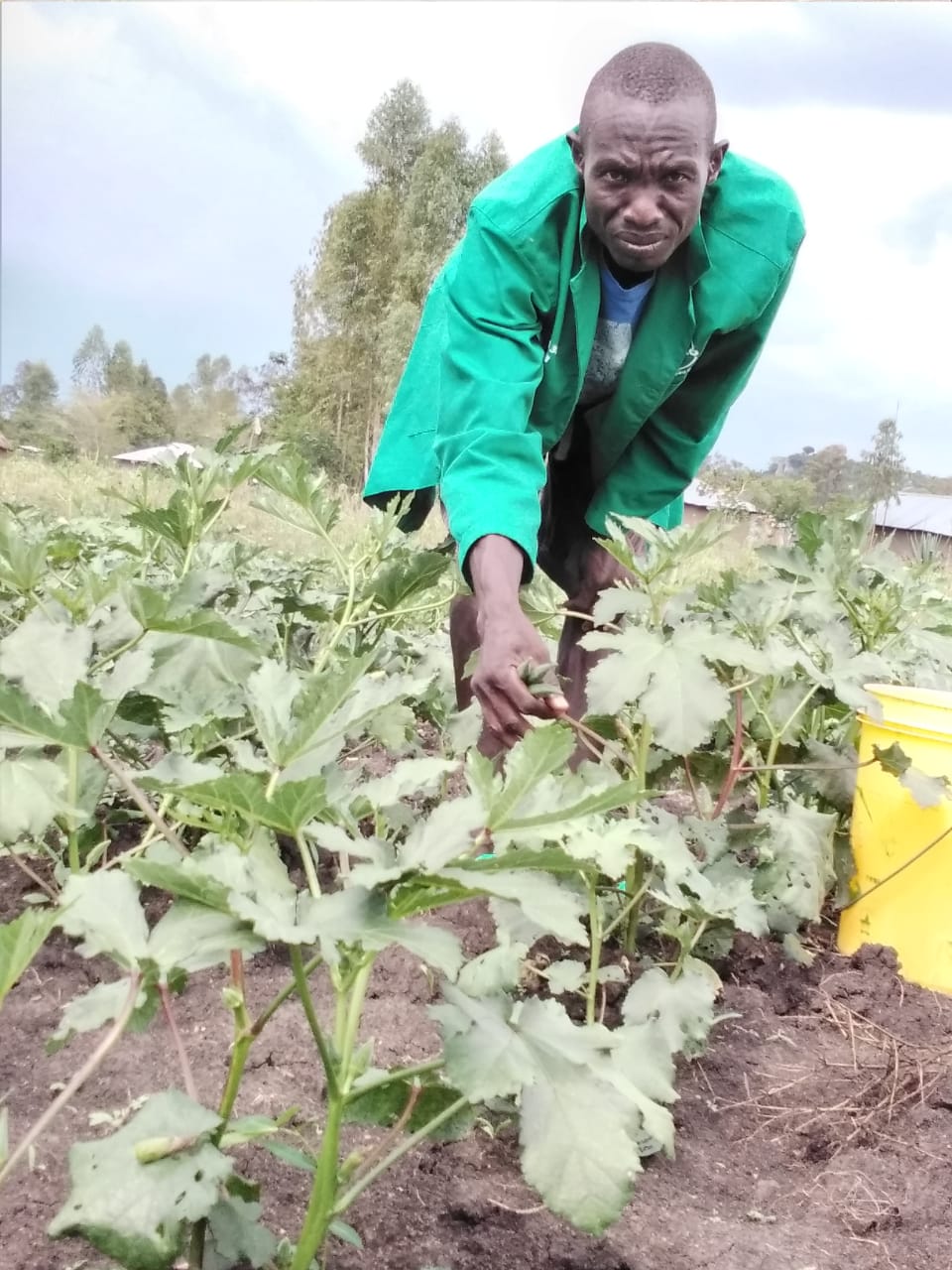
Paul Otieno grows Okra at Bamgot area in Kisumu County on two different farms measuring 1.5 acres each from which he has been producing over 12 tonnes of the crop for over a decade now.
In 2019, Otieno took his okra, also known as lady’s fingers to Jubilee Market in Kisumu City to sell to his usual traders only met some South Sudanese, students at Great Lakes University of Kisumu (GLUK).
The students-cum-traders were buying the produce from the market for trading back home and they agreed to have a business deal with Otieno so that they would buy okra directly from his farm.
According to the deal, the students were to pay for everything upfront so that Otieno would organise for harvesting and transporting the fresh produce to S. Sudan via public means hence helping them have time for their studies.
“At first, they offered to give me Sh100 per kilo, Sh20 more than what the Kisumu traders offered. However, when okra business continued growing for them in S. Sudan, they decided to offer Sh300 per kilo and that marked the beginning of my fortunes in agribusiness,” said Otieno.
He started exporting up to 300 kilos of the nutritious vegetable a week to the youngest African nation where the crop is valued by consumers who eat it as vegetable or processed into flour for cooking chapatis among other food products.
Soon transporting the many kilos of fresh okra to S. Sudan would develop challenges as it started arriving already spoilt due to much heat following delayed delivery.
“The public service vehicle we were using started having several stoppages along the way leading to complains from my trading partners about the entire package gone,” said Otieno.
This birthed a value addition idea.

How?
According to Otieno, the students decided to visit him to observe his post-harvest handling process and when they could not identify amiss, they came up with a plan.
“They advised me to harvest the vegetable, cut them into rounded pieces, dry then in the sun before taking them to a posho mill for grinding into powder form which would then be packed and transported as a parcel to S. Sudan,” said Otieno.
He would then harvest the pods, slice them into sizes of 1, 2, 3 or 4 cm across the length before sun drying until they become brittle.
Once this is done, he picks some leaves of the nutritious moringa tree, cut them into small pieces and dry them too. The dried leaves are mixed with okra brittles to make them easy to mill.
“I then pour the flour in brown kaki paper bags of 1kg before packing them in a sack for a two-day transport to Juba, South Sudan.
Good returns
According to their trade deal, Otieno is paid as per the fresh weight whereby 150 kilos of fresh okra can produce about three kilos of okra flour.
“The high yielding “Pusa sawani” okra variety I grow matures in 45 to 55 days. I harvest 950kg a week of which 300kg is turned into flour (about 6kg) for export to S. Sudan at Sh300 per kilo of fresh weight.”
The students also opened a restaurant within GLUK where they make and serve chapatis and snacks made from okra flour to the many South Sudanese and other students in the campus creating another market for the Kisumu farmer.
Here, he also supplies 300kg (6kg okra flour) at Sh300 per kilo of fresh weight while the remaining 50kg is supplied fresh to Kisumu City’s Jubilee Market at Sh80 a kilo.
This translates to Sh184,000 gross income a week and Sh736,000 a month.
He says the harvesting period of okra lasts for three months meaning after the end of the season he earns Sh2,208,000 gross and about Sh1.1m in profit.
“I have been producing this crop organically and currently I produce over 12 tonnes of the vegetable per season and I have been steadily supplying my three major markets for over a decade now.”
Experts assert that okra’s market value is all time high as it is rich in carbohydrate, protein, dietary fibre, calcium, magnesium, potassium, vitamins A and C. It also contains glycans for good soup and iodine which is useful for the treatment of goiter.









Good venture. Wish I could get such market. I would also undertake this at the coast
Comments are closed.